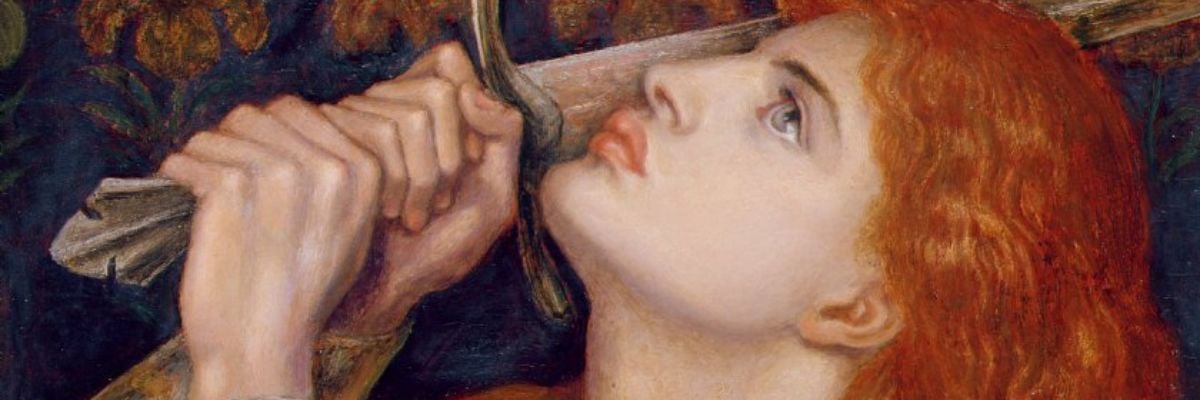
Question:
Answer:
There are various reasons, particularly the Church’s affirmation of her sanctity in canonizing Joan, something Church leaders wouldn’t do if they thought she were delusional or a fraud. Regarding her visions, one biographer states,
We are not for a moment suggesting that St Margaret or St Michael or St Catherine assumed in fact a human body in order to manifest themselves to St Joan; nor do we care very much for the theory that these visions were a pure figment of her imagination. After all, these visions did change for many years the course of history for three nations and, in whatever manner they came, we may be allowed to think they were designed by God as the means for Him to influence and direct human affairs.
Indeed, history was impacted significantly as a result of St. Joan’s visions. Though being a simple peasant young woman, she impressed the King of France:
The king took her apart and had a long conversation with her. It is said that “she confided to him a secret which was known to him alone and to God, which gave him a great confidence in her”. What the secret was, no one knows and St Joan repeatedly refused to reveal it to her judges. Charles was impressed but would take no final decision yet.
She subsequently impressed a commission of theologians who, though they didn’t pronounce on the origin of her visions, counseled the king that Joan “must not be prevented from going to Orleans with the men-at-arms,” because “to do otherwise would be resisting the Holy Spirit and making oneself unworthy of the help of God.”
And St. Joan didn’t buckle despite repeated bad treatment, a temporary retraction made out of fear of being burned at the stake notwithstanding. Finally, again, we have the infallible judgment of the Church on Joan’s sanctity in canonizing her. Canonization is distinguished from evaluating a person’s reported private revelations, but the Church never would have canonized St. Joan had they not thought her associated private revelations worthy of belief.
For more on St. Joan of Arc and her life, see this article and this article. For more on private revelation in general, see our tract.



